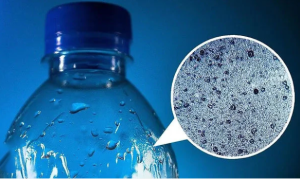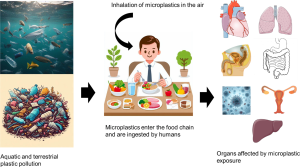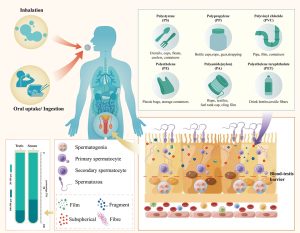Plastic wares have become an integral part of daily life, found in nearly every setting—from homes and offices to social gatherings.
 Their convenience, affordability, and versatility make them a popular choice for food storage, packaging, and serving.
Their convenience, affordability, and versatility make them a popular choice for food storage, packaging, and serving.
At home, plastic toothbrushes, containers, utensils, and bottles are used for everything from meal preparation to storages. In offices, plastic cups, plates, and water bottles are common, especially in meetings and break rooms.
Social events like parties, picnics, and outdoor functions also rely heavily on disposable plastic wares for easy cleanup and cost-effectiveness.
The convenience and affordability of plastic have made it a ubiquitous material. However, this widespread use comes with growing environmental and health concerns, researchers warn.
humans can be exposed to microplastics through direct ingestion, direct contact, and inhalation
Apart from the significant environmental consequences, including pollution, deforestation, and harm to wildlife that plastic use poses, scientists warn that chemicals from plastic products can leach into food and beverages, raising potential health risks, including male infertility.
 Means of exposure
Means of exposure
According to researchers, humans are mainly exposed to microplastics by using various plastic products (i.e., plastic packaging containers, decomposing plastic materials, fishing nets, textiles, and personal hygiene products) and being exposed to paint fragments (e.g., abrasion of paint) that have flowed into the environment (i.e., air, water, seawater, or soil). As such, humans can be exposed to microplastics through direct ingestion, direct contact, and inhalation.
What this translates into, simply, is that microplastics are almost impossible to avoid, even if you are careful enough to avoid using plastic products!
Microplastics are seemingly everywhere in our daily lives, and scientists are working to determine the potential effects they can have on our health. A new study illuminates the possible dangers to men’s fertility that the tiny plastic particles pose.
The research, recently published in the Toxicological Sciences journal, looked at the presence of microplastics in both dog and human testes and examined their possible association with lower sperm
“The ubiquitous existence of microplastics and nanoplastics raises concerns about their potential impact on the human reproductive system,” the authors explained in the study.
findings highlight the pervasive presence of microplastics in the male reproductive system in both canine and human testes, with potential consequences on male fertility
“Limited data exists on microplastics within the human reproductive system and their potential consequences on sperm quality. Our objectives were to quantify and characterize the prevalence and composition of microplastics within both canine and human testes and investigate potential associations with the sperm count, and weights of testis and epididymis,” the authors added.
 The scientists studied 23 human testes and 47 testes from pet dogs. The human specimens were taken from postmortems conducted in 2016 and came from men ranging in age from 16 to 88 when they died; while they got the dog testes from vets’ offices that collected them after neutering operations. In the end, the team found microplastics in all 70 samples, though the levels between each individual varied significantly.
The scientists studied 23 human testes and 47 testes from pet dogs. The human specimens were taken from postmortems conducted in 2016 and came from men ranging in age from 16 to 88 when they died; while they got the dog testes from vets’ offices that collected them after neutering operations. In the end, the team found microplastics in all 70 samples, though the levels between each individual varied significantly.
“These findings highlight the pervasive presence of microplastics in the male reproductive system in both canine and human testes, with potential consequences on male fertility,” the scientists wrote. Because the human testicles had been preserved, their sperm count could not be measured. They were able to determine sperm count in the dogs’ testes, however, and found lower counts in samples with higher contamination with PVC — the world’s third-most widely produced synthetic polymer of plastic, used in an enormous range of domestic and industrial products, from raincoats and shower curtains to window frames and indoor plumbing.
Especially worrying among the men’s testes was the apparent higher percentage of microplastics among younger men
The study shows a possible correlation between low sperm count and male infertility, but more research needs to be done to prove that microplastics cause sperm counts to fall and exactly why that is.

“At the beginning, I doubted whether microplastics could penetrate the reproductive system. When I first received the results for dogs I was surprised. I was even more surprised when I received the results for humans,” study co-author Xiaozhong Yu said.
Especially worrying among the men’s testes was the apparent higher percentage of microplastics among younger men. “The impact on the younger generation might be more concerning,” Yu said.
sperm counts in men have been steadily declining for decades, with all kinds of studies pointing the finger at various causes
Lower sperm counts aren’t exactly something new. In fact, sperm counts in men have been steadily declining for decades, with all kinds of studies pointing the finger at various causes from environmental toxins and chemical pollution like pesticides to poor diet and health management tactics. Sadly, these microscopic problems are seemingly here to stay.


